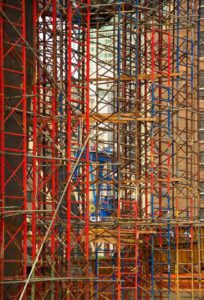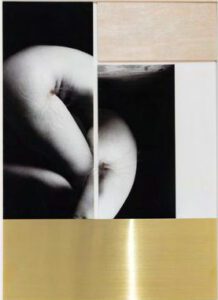Gabrielle Bejani

(edition of 5) Archival Inkjet Print
48 x 33 cms, 2016 Edition no 1
For its 8th edition. From the 11 to the 14th of May 2023, Photo London opened its doors at Somerset House. The new director: Kamiar Maleki, previously Director of VOLTA Art Fairs in NYC and Basel, and Fair Director of Contemporary Istanbul, has over more than 20 years’ experience in the field. He is replacing Michael Benson and Fariba Farshad who founded the Fair and ran it since its first edition.
This year, the fair seemed to be traversed by a schizophrenic sentiment, torn between their effort to appeal for an art conscious public (which would further assert their legitimacy), and with the display choices of conservative galleries.
One of the celebrated goals of this edition was to reach a new level of internationalism. This year Photo London is showcasing 126 galleries from 56 different cities based across the world, something that I greatly appreciated while roaming from booth to booth. However, most of the galleries from the Global South are situated in more remote part of the fairs, which can be easily missed. I advise all visitors to venture to the second floor to discover galleries and artists which they may never have encountered before. I was delighted to visit galleries such as Blue Lotus gallery from Hong Kong and the Carlos Camano Foto gallery from Lima, where I discovered rich and complex photography.
However, disappointedly the fair is still dominated by very outdated Eurocentric and androcentric viewpoints. Many European galleries chose to showcase art that seemed out of touch with current artistic discourse. I was indeed surprised by the overall curating decisions at many booths.
One example is how a gallery from Amsterdam decided to commemorate the 50th Anniversary of Pablo Picasso’s passing by presenting a collection of photographs about his family, friends, and daily life. I find this ironic considering how recently his behaviour with his friends, lovers and his children has been criticised and denounced as abusive, which many claim puts his legacy into question. Picasso represents an old art world entangled in violent beliefs about the world and how to behave in it, an art world which many forward-thinking art professionals are working hard to put in the past.
One is also greeted by pictures of people from the Global South that can only be described as poverty porn and countless pictures of nude women contorting their bodies in the most sexual manners. I believe this kind of art, while not being very interesting, appeals to these galleries’ collector base. But surprisingly the public program seems to come from a completely different perspective.
One of the exhibitions in the program is: “Writing her own Script. Women Photographers from the Hyman Collection” ‘Writing her own Script’ celebrates many of the pioneering women photographers at work in Britain over the last 100 years. It charts a course from the 1930s to the present and provides an overview of photography in Britain that focuses on two strands: a humanistic documentary tradition and a more personal, performative, practice. The exhibition is curated by the Centre for British photography. a fresh new charity which had a notable positive impact on this year’s fair. The charity supports photographers in Britain at all stages of their career while seeking to promote British photography to a wider audience. Alongside curating, the charity also holds a booth among the other galleries.
There is also a solo show of new work by this year’s Master of Photography Martin Parr. The overview displays a certain quintessential Britishness which is appropriately celebrated in an art fair that is situated in the heart of the British art scene. One can admire his most recent pictures of British beaches which appropriately cater to his overall legacy. In a corridor can be found earlier work of the artist, black and white pictures from the fifties. It was very interesting to discover how Martin Parr used to work and delightful to observe that his subject matter remained the same; the British seaside but seen with an entirely different lens.
One of the highlights of the fair was the booth of Roya Khadjavi Projects and Nemazee fine art which displayed the work of six Iranian photographers: Ali Tahayori, Dariush Nehdaran, Farsad Labbauf, Maryam Palizgir, Mohammad Jahangir, Tahmineh Monzavi. Their practices are based on documentary engagements that intertwine social conscious and environmental works from the urban communities to the rural landscape. The artists challenge the taboos, related to ethnicity and sexual orientation as well as issues concerning the environment. They hope to shift the preconceptions and prejudices to social reconciliations. One of the artists, Maryam Palizgir won the fair’s People’s Choice Award which is chosen by the public from the 2023 Emerging Photographer of the Year shortlist.
This show felt rooted in real and personal sentiment rather than a strictly commercial outlook, something that comes through because of the particular relationships Roya Khadjavi holds with the artists she champions. She actively works to create spaces for Iranians artists allowing them to thrive in the western art landscape. I had the pleasure to interview Roya about this show and her curatorial outlook.
Gabrielle Bejani: My first question is, what does it mean for you to show Iranian artists here at Photo London?
Roya Khadjavi: It’s very important for me to be part of Photo London, especially this year because of what’s happening in Iran, and I think it’s very important to bring awareness to the depth and the quality of the work that Iranian photographers make, and the variety of work and the different subject matter they produce. In this exhibition we are covering different things that are a little controversial, which is what’s happening to land in Iran, what’s happening to water, the lack of attention this regime has for all of these things and here specifically for the South of Iran. The recent work of TAHMINEH MONZAVI displayed here focuses on this matter. They are photographs of the the Dasht-e lut Which is a diluted desert, and the Baluchistan region, one of the regions of Iran which is in a lot of turmoil. There, a lot of demonstrations are happening, a lot of people are going to jail. A lot of people are arrested and killed. I wanted to bring awareness about all of this. How nice these people are and how deeply they’re attached to their land. You may wonder why the Iranian government isn’t taking care of them? Many of them don’t even have identity cards because they are Sunnis and the majority of Iran is Shiites, that has created a sort of battle between the government and them. They think that by ignoring their needs, that these people will just disappear. I wanted to bring awareness to the beauty of this dramatic land and highlight that this is what you see when you come to Iran today.

Photo Collage, wood, bronze, dried plant.
30 x 40 cms (2022) Unique
Gabrielle Bejani: I’ve noticed that in the works selected there is a link between land, body, and identity. Was that a conscious curating choice?
Roya Khadjavi: Yes, exactly. That was a conscious choice because as I said, these are hard topics that the government doesn’t want to really deal with. Land and water are issues, nature is kind of shrinking and disappearing. Regarding identity Here in our booth, we have the works by ALI TAHAYORI which is a queer artist. As a homosexual in Iran, he had to flee because he was found out in an underground party of gay men. somebody reported it to the police, and he was jailed. In his work you see an inverted triangle used as a sign of the defiance of the gay community, which is a reference to the persecution and mass murder of queers by the Nazi during World War two. And of course, he’s also using this technique of mirror work, which is very much A traditional Iranian decorative art but at the same time you can see your reflections in the mirror. It’s an invitation to look at oneself and to see how accepting one is of others that are different from them.
Gabrielle Bejani: Right. Something else I’ve noticed is that a lot of the artists you’re showing are part of the Diaspora, and I wanted to know what’s your relationship to the diaspora in your curatorial practise.
Roya Khadjavi: I started my curatorial practice right when I went back to Iran after 30 years away. During this trip I discovered how vibrant and diverse the art scene of Iran was. I felt like the artists from Iran were very underrepresented. So, I made it my mission to challenge the underrepresentation of these Iranian artists who live in Iran. But you know. Soon, very soon, after I started my practise, I realised that there were so many Iranian artists who had to flee for various reasons and established themselves in the diaspora, they’re everywhere. And I think our art show here at Photo London reflects that, I am showing artists that are living New York and artists that are in San Francisco, I have an artist from Iran and artists from Australia. It sort of tells you like how to spread out this community has become. Mostly not because of choice, they had to flee to be able to practise their art.
Gabrielle Bejani: one last question, can you tell me a little bit about, the curatorial process for this exhibition?
Roya Khadjavi: For this show, like for any of my curatorial project, I always think of a subject that is viable and relevant and then based on that theme I consult the artists that I work with and include their bodies of works that relate to the topic I’m interested in. That’s what I did for this exhibition.
